“Being Michelle” is a documentary about a deaf woman with autism who survived incarceration and abuse in north central Florida, and now uses her artwork to depict the trauma she survived and heal from her past.
Michelle Ricks said she was in prison for five years without an interpreter. Executive Producer Delbert Whetter said he believes Ricks would never have ended up in prison if she’d had communication access from the start.
Her story highlights gaps in accessibility for deaf and disabled people in the justice system. While her experiences unfolded within north central Florida justice systems and Lowell Correctional Institution in Ocala, the filmmakers say this is a nationwide issue.
The film was selected for numerous festivals around the country, and won the audience award for best documentary feature at the Florida Film Festival earlier this year.
WUFT’s Report for America Corps Member Katie Hyson sat down with several members of the team – Director and Producer Atin Mehra, Producer Mae Thornton Mehra, and Executive Producer Delbert Whetter – and Whetter’s translator Sharon Pierre-Louis, to talk about Michelle’s story and the larger issues it raises.
A Florida Department of Corrections spokesperson told WUFT that the department has “an Office of ADA Compliance with a robust support structure to ensure that all inmates with documented disabilities are provided equal access to all programs, services and activities.”
Hyson previously reported on Putnam County law enforcement, Lowell prison, and accessibility issues for deaf people in the local justice system.
You can watch a trailer for the documentary and the full interview, with American sign language interpretation, above. Below, read a condensed version of the interview, edited for clarity.
The Interview
Could you give an overview of the story for people who haven’t seen the documentary?
DW: It’s about a deaf woman with autism. And she’s finding herself stuck in a cycle. So she’s in the prison system. There’s abuse, there’s trauma, and there’s a lot of experience that goes with not being able to communicate, not having access, not having any accommodations. Her experience really spotlights just how much we need to change that.
How did you first hear of Michelle’s story?
AM: A friend of mine who is also EP in our project, Rajiv Sanghvi. One day he called me and said, “You’ve got to meet this person in Florida.”
We went and I saw Michelle. I felt like we really connected with each other. It was not an easy deal to open her up because she was traumatized by people and society and what happened to her. Slowly, slowly, slowly she started revealing herself.
Finally, she has a voice. And finally, people are listening to her.
It struck me so powerfully as a viewer, what a central role she had in the documentary and telling her own story. What decisions did your team make to help facilitate that?
AM: We tried to figure out her language. That was the biggest challenge because she knows sign, but very basic sign. Also, she was traumatized. Her trauma was so heavy that she couldn’t speak.
So what we saw was the artwork. She started drawing one day.
And I was like, “Michelle, what is that?”
She started drawing things and expressing to me what was happening to her. That was the click we had – that her artwork is her language, basically.
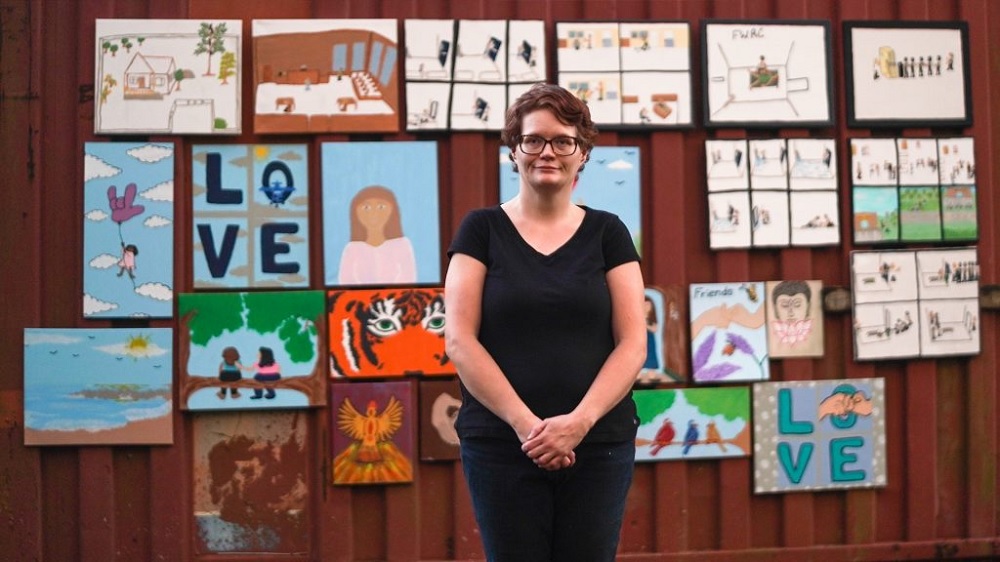
Courtesy of Atin Mehra
Traditional communication methods can be challenging for Michelle Ricks. Instead, she uses artwork to express the trauma she survived in the north central Florida justice system.
Can you walk me through the reporting process?
MTM: After gaining one or two really intimate sit-down interviews, we were able to get a picture of what she experienced and how we might begin to turn this into a story. That was a really crucial point in us just beginning to listen to her.
Michelle was born into a hearing family. Michelle’s experience of language deprivation began at a young age and continued throughout her life. But Michelle now has access to an amazing group of [documentary] team members that she’s able to communicate fluently with.
Then we went back and Michelle took us to the places that she experienced some of these different things in life.
Throughout the filmmaking process she played a key role in the storytelling and figuring out what parts of her story we would tell and how.
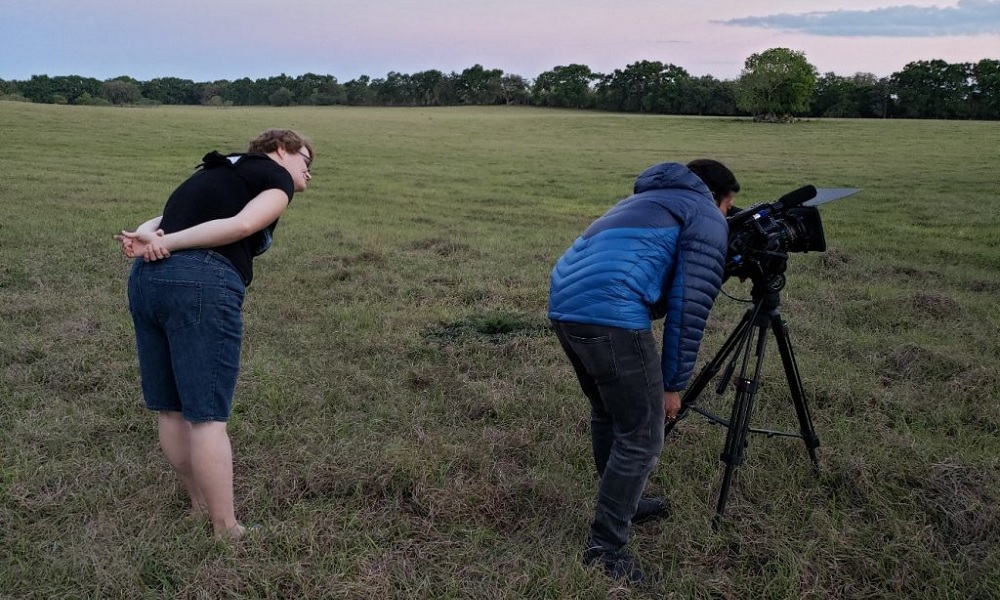
Courtesy of Atin Mehra
The documentary team says Michelle Ricks played a key role in the film’s making. “Finally, she has a voice. And finally, people are listening to her,” Director Atin Mehra says.
Delbert, did you want to add anything to what Mae was saying?
DW: Michelle was the lead in the story. And that is important for me, being a deaf person.
Many times stories about deaf people are from the perspective of an outsider. And it’s just not really the deaf experience.
This particular documentary becomes a vehicle, basically, for Michelle to tell her story.
With law enforcement, it’s really easy to have a communication breakdown. In the deaf community, we hear so many stories about how such breakdowns can happen. Nine out of ten deaf people are born in hearing families, and sometimes they don’t have that knowledge passed onto them like a deaf family does. To get that knowledge to the community is important.
It can be a scary experience, especially within the criminal justice system itself. It’s not built for deaf people. It’s not built for people with disabilities. There are many flaws in the system that we need to be able to address directly.
“She didn’t even understand why she had been arrested. Nobody had ever explained to her.”
Mae Thornton Mehra, Producer of “Being Michelle”
Can you highlight some examples of how the ways the justice system failed to make itself accessible to Michelle’s differences may have actually contributed to her record and her incarcerations?
DW: I believe that if Michelle had communication access from the beginning, she would never have been there in the first place. She’s basically stuck in the system. There’s this cycle again and again and again, because the communication is not there to get her out.
Communication access without making sure the person understands is not access. Some deaf people, like Michelle, maybe they don’t have the understanding of what someone is signing to them. So maybe it’s not enough to just have the interpreter, you need to have a certified deaf interpreter, with the hearing interpreter, also with the social worker, just to make sure that they really understand what’s going on.
MTM: One of the most powerful moments was a portion of the film where Michelle has found her prison and jail records online. And she’s going through them. And she’s asking, “What does this mean?” She didn’t even understand why she had been arrested. Nobody had ever explained to her.
It’s all these years later, as we’re going through this process of recording her story, that for the first time, finally, someone’s explained to her what it meant and why she had been arrested.
DW: She didn’t understand what she was being penalized for. Many years in prison, and not understanding why.
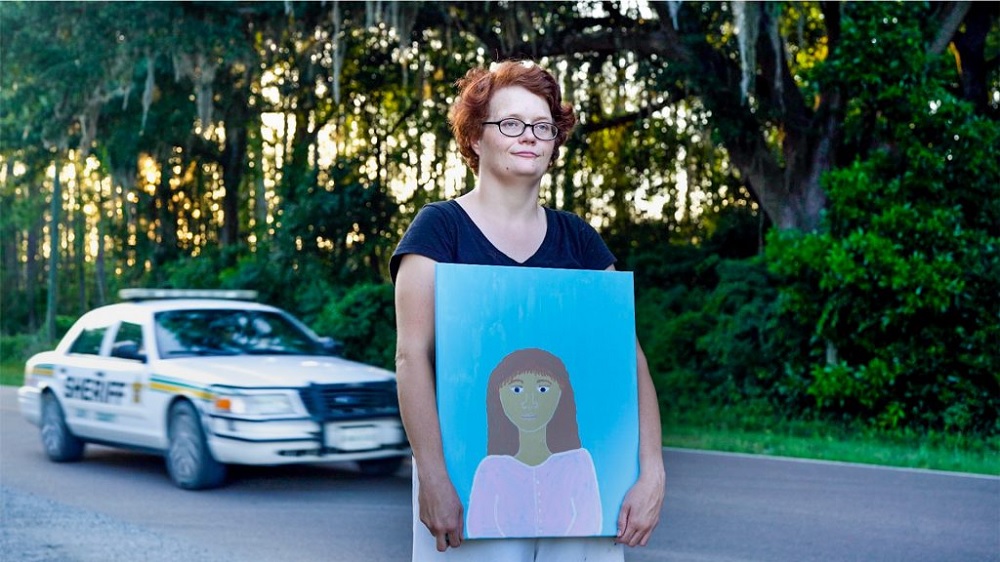
Courtesy of Atin Mehra
Much of Michelle’s criminal record may have been caused by breakdowns in communication. At one point in the documentary, she recounts trying to report a terrible assault she just survived. Instead, she was arrested and sent to jail.
And she was unable to communicate, she said, during much of her time, because she was handcuffed?
AM: Handcuffed, but also – the [women incarcerated at Lowell] are telling us what they were doing not to her only but to the disabled women inside the prison system, especially in Lowell prison.
Giving her heavy drugs, and then she has a reaction from the drugs, and all the guards, they think she’s “mentally crazy.”
DW: One of the most important things to keep in mind is the way that the system works in prison. There are different activities – therapy groups, classes – incarcerated people can choose to help lessen their sentence and improve themselves.
In essence, Michelle did not get that opportunity. She was not provided access to an interpreter.
Deaf people don’t get to get out early because of this. It’s important to remember Michelle’s story is not unique. Many deaf people in prison have experienced the same exact thing.
Her experiences unfolded inside [north Central Florida justice systems] and inside Lowell prison. Do you think those entities are unique in the severity of these issues?
MTM: In the process of making this film, we’ve connected with other leaders and advocates working on these issues across the country.
We have federal prisons, we have state prisons, we have private prisons. All of the states have different ways of dealing with these issues. There’s no national mandate or understanding of how deaf disabled people should be treated in the criminal justice system.
So while we do know what Michelle suffered at Lowell prison, which has a reputation of being one of the worst female prisons in the country, we know that there are just as horrible things happening to people around the rest of the country.
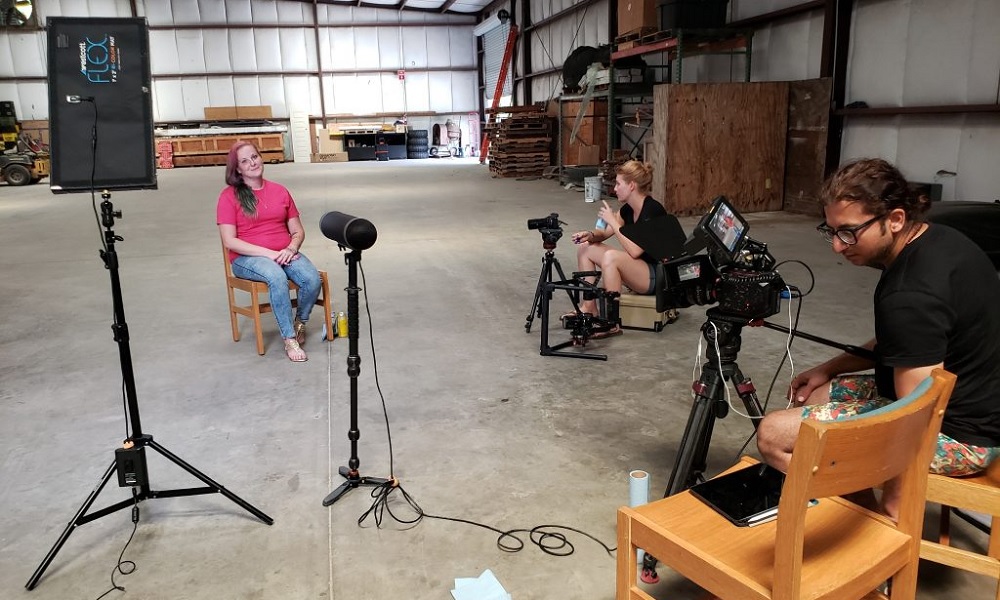
Courtesy of Atin Mehra
Director Atin Mehra says they tried to get all sides to the story, including speaking with other women who had been incarcerated or worked as officers at Lowell prison.
What seem to be some of the low-hanging changes that might help address some of the issues raised by her story?
DW: The minute a deaf person enters the court system, automatically, we need to make sure that an interpreter is there, and a certified deaf interpreter. If there is not already an interpreter present, then an interpreter should be requested.
One moment in the documentary that really stood out to me is when she was trying to report a terrible assault that had just happened, and she ended up being arrested and taken to jail herself. What kinds of changes could help those interactions with law enforcement?
DW: We need better training with law enforcement. Not everyone needs to learn sign language. But give them the tools and the confidence to be able to be creative enough with every unique situation to have open communication. They need to have patience, ask more questions, listen, try to communicate.
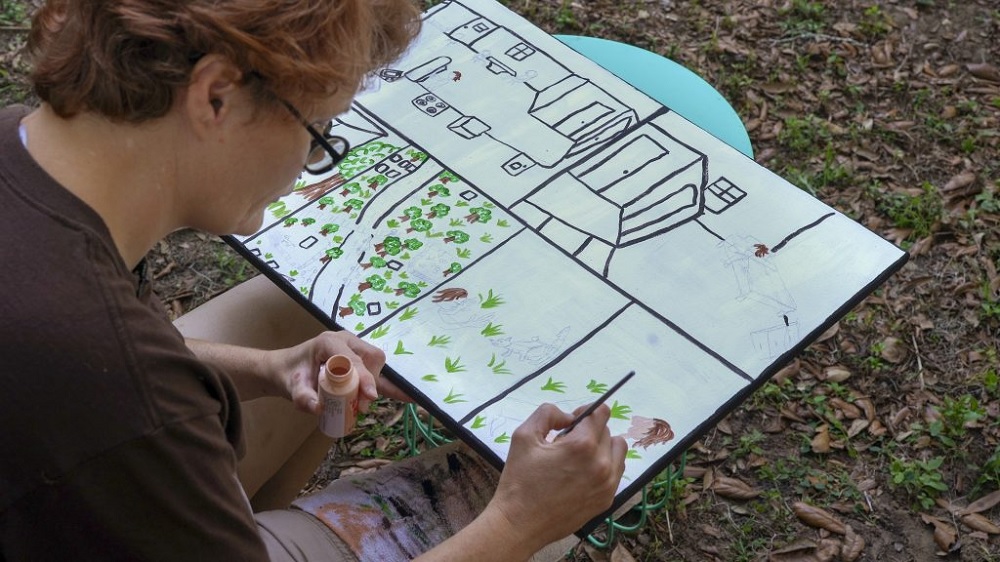
Courtesy of Atin Mehra
For the first time in her life, Producer Mae Thornton Mehra says, Michelle Ricks is dreaming of living independently.
What’s next for Michelle?
MTM: There are just a few states in the United States which offer better services and support for someone like Michelle.
Our team is currently researching different states to find a better opportunity for Michelle, where she can continue to learn independent living skills, where she can have access to communication on a daily basis and yet still maintain her independence.
AM: And she’s very excited about that!
MTM: She’s dreaming about things that she never thought possible before – being independent and for the first time being able to live on her own.
What do you want the public to take away from Michelle’s story?
MTM: There are so many more Michelles out there.




























